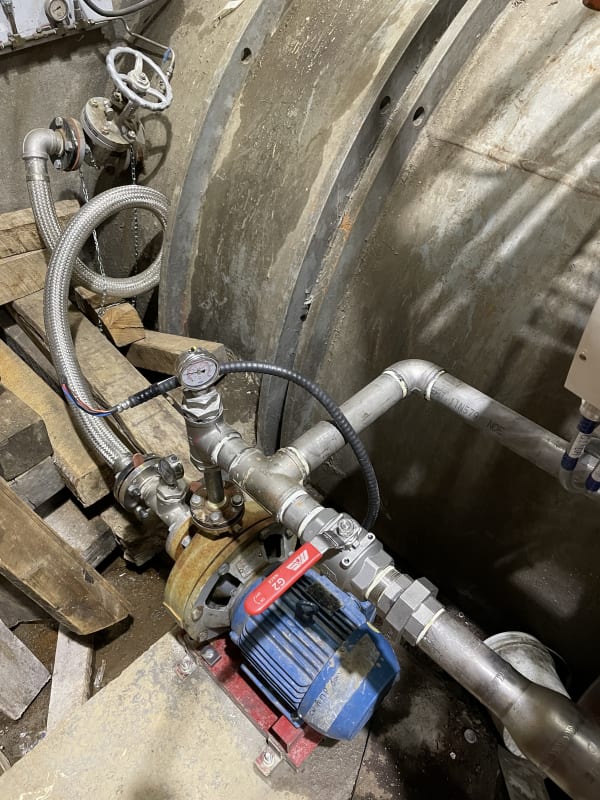p6g2p6
Mechanical
- Jul 28, 2021
- 37
Hi,
At one of our plants, we have a booster pump for a cooling water system. It draws water from the penstock, which according to the transducer has a pressure of 21 PSIG. The suction-side piping stems right off the penstock then there is a ~5ft 2" hose that connects to the pump. There is a pressure gauge on the suction side and that was reading 30 PSIG, therefore 9 PSI higher than the penstock pressure. The transducer for the penstock pressure is placed at the same elevation as the pump. Is it normal for the suction pressure to increase when a pump is drawing from a source that has a greater pressure than atmospheric? Or is there a good case that either the gauge or transducer reading is incorrect?
Thanks in advance!
At one of our plants, we have a booster pump for a cooling water system. It draws water from the penstock, which according to the transducer has a pressure of 21 PSIG. The suction-side piping stems right off the penstock then there is a ~5ft 2" hose that connects to the pump. There is a pressure gauge on the suction side and that was reading 30 PSIG, therefore 9 PSI higher than the penstock pressure. The transducer for the penstock pressure is placed at the same elevation as the pump. Is it normal for the suction pressure to increase when a pump is drawing from a source that has a greater pressure than atmospheric? Or is there a good case that either the gauge or transducer reading is incorrect?
Thanks in advance!

